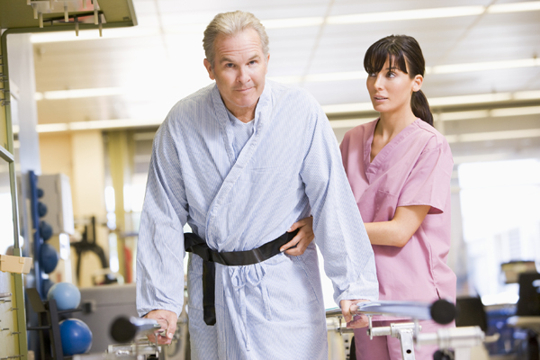At the top of the list of tough challenges will be incorporating exercise into your recovery. New research shows that exercise may be one of the most important parts of your recovery – not just for your body, but for your mind as well.
What the Research Shows About Exercise After Stroke
Doctors and therapists have long known that exercise is helpful after a stroke, but an analysis of several research studies provides more insight into what exercise actually works best – specifically the type of exercise and the duration.
The biggest takeaway from the analysis is that exercise after a stroke is good not only for the body but for the brain as well. In the simplest terms, a stroke cuts off blood supply to the brain. It can impair cognition, which includes vital mental processes such as thinking, memory, understanding, and learning.
This new research shows that people who exercise after a stroke show greater improvements in cognition than people who do not exercise. And the good news is, that exercise does not need to be intense: Walking on a treadmill at a slow pace was enough to provide a benefit.
The people who have the most significant improvements in cognition after stroke combine this type of moderate aerobic exercise with strength and balance exercises. They see benefits in their working memory, mental processing speed, and attention.
While most people who suffer a stroke will be encouraged to start an exercise program early in the recovery process, the research showed the benefits were seen even if exercise started much later. Stroke patients who began exercising 2.5 years after their stroke still saw benefits in cognition. Additionally, the exercise program did not have to last long; programs that lasted four to 12 weeks were just as effective as longer-term regimens.
Exercise Is Only Part of the Equation
The holistic approach that brings together exercise with other forms of therapy are all important parts of the stroke recovery process. Equally important is making lifestyle changes that may help to ward off another stroke in the future.
These changes should include controlling medical conditions such as atrial fibrillation, high blood pressure, high cholesterol, diabetes, and obesity. You should also make sure that you get the recommended amount of exercise (when and if you’re physically able), and make changes to your diet – including cutting back on the amount of alcohol you drink – to reduce your risks.
Keep in mind that if you or someone you love has suffered a stroke, it’s critical to maintain hope and a positive outlook. Your rehabilitation team will be working hard to help you live a happy, independent, and healthy life.
About Crozer Keystone Staff
Crozer-Keystone Health System’s physicians, specialists and advanced practitioners are committed to improving the health of our community through patient-centered, quality care across a full continuum of health services. Crozer Brinton Lake is Crozer-Keystone’s comprehensive outpatient care facility in western Delaware County, offering primary care, specialty services, outpatient surgery and advanced cancer treatment. Contact us: 300 Evergreen Drive, Glen Mills, PA 19342 http://www.crozerkeystone.org/Brinton-Lake 1-855-254-7425
- Web |
- More Posts(131)


Comments